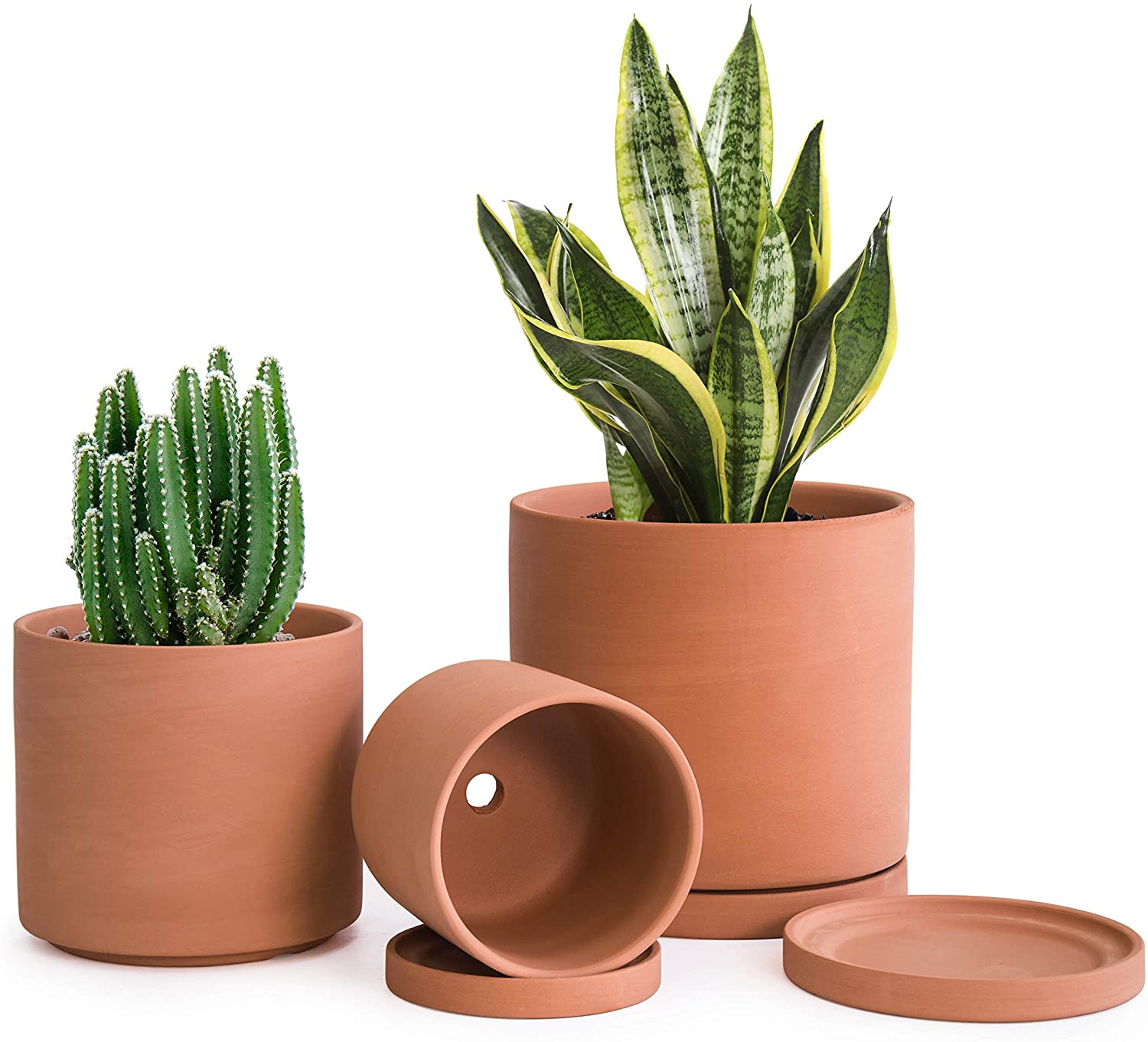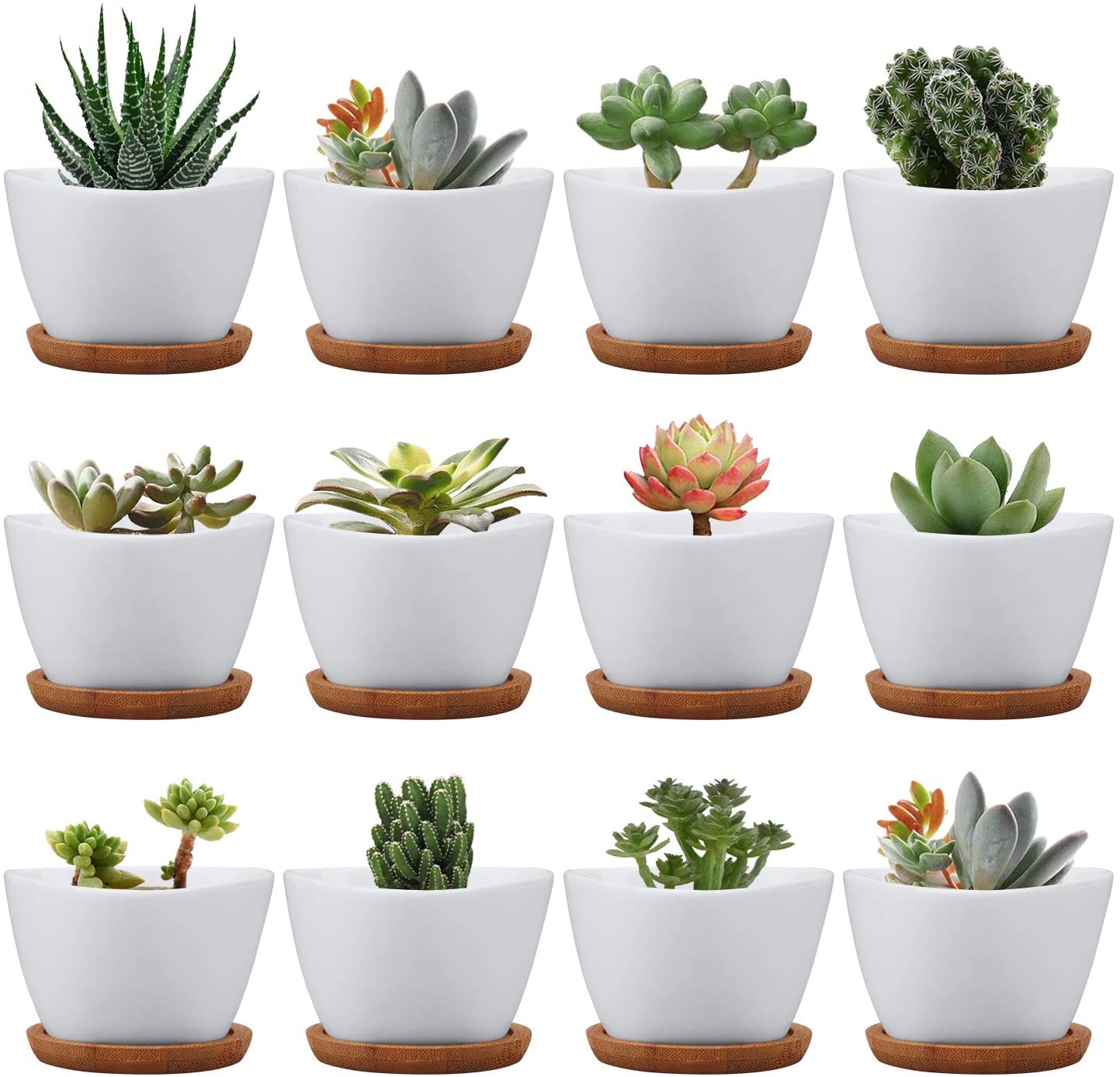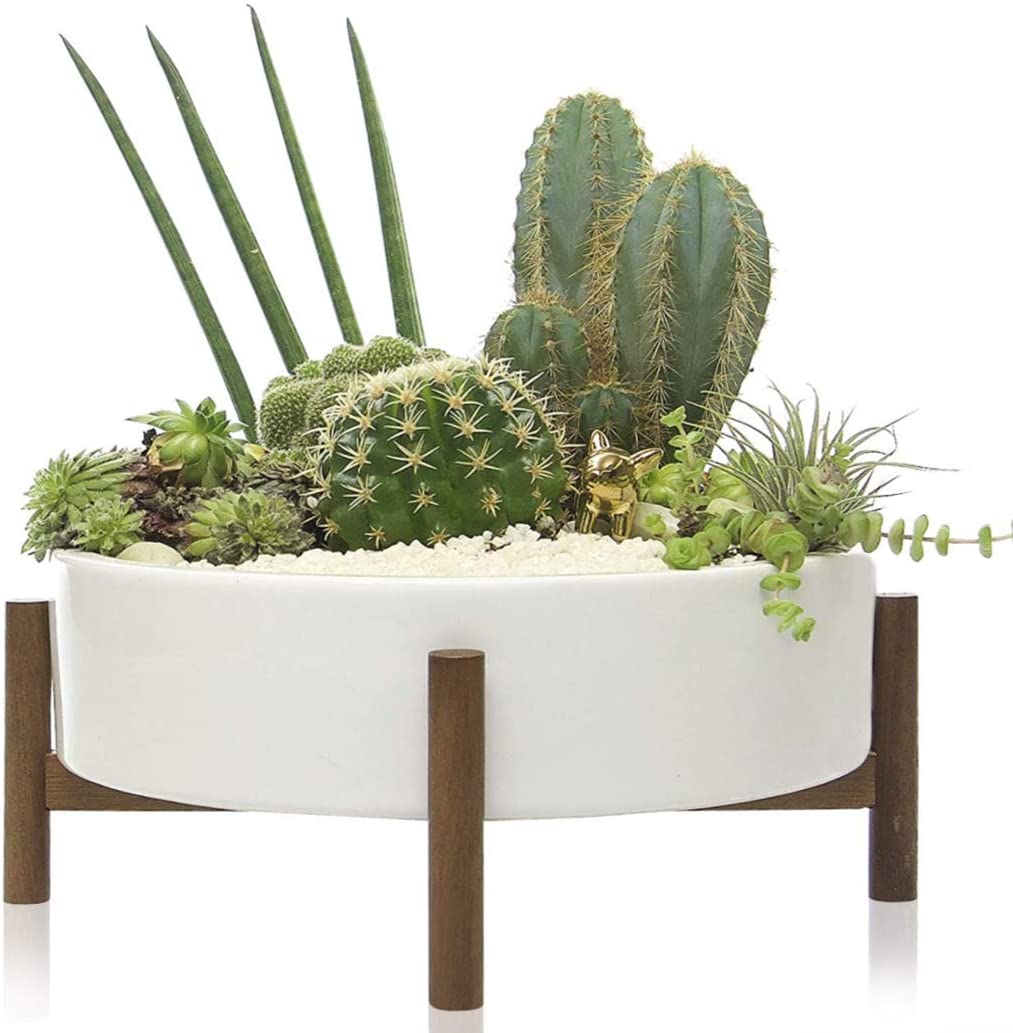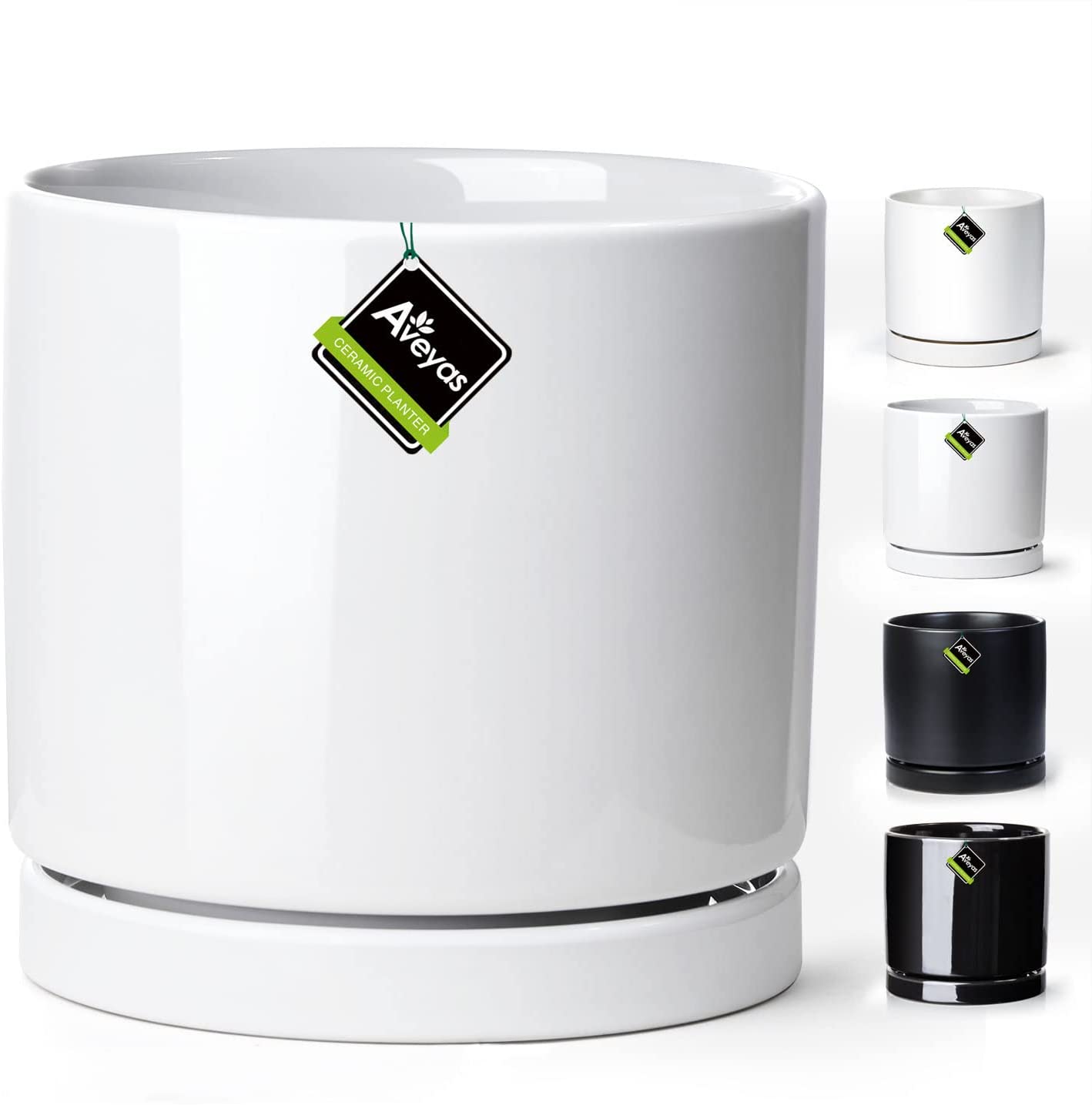Have you been eyeing a new succulent lately? Or maybe you have a growing collection and just need a new pot? Whether you’re a beginner or a succulent expert, we all need to have one thing right in our succulent care. And that is… we need to choose the right pot!
So what are the best pots for succulents? Today I’m going to tell you exactly what works and what doesn’t work for succulent pots, as well as give you some recommendations of my personal faves. Then if you still have questions, check out my “Frequently Asked Questions” section at the bottom of the page. Or just scroll down to see my top 5 best succulent pots!
Ready?!
Let’s dig in!
**Note: This post may contains affiliate links, which helps support this website, at no extra cost to you!**
What Makes the Best Pots?
There are three keys that you need to look for in the right container. The perfect succulent pot would consider:
- Drainage
- Material
- Size
Let’s address these things one at a time.
#1: Proper Drainage

I’m sure you’ve heard it before, but let me stress this fact… succulent pots NEED drainage holes!!!!
Technically, you CAN keep succulents alive in pots without drainage holes by simply adding only small amounts of water at a time. I know, because I’ve done this. But speaking from experience, these succulents never thrive like the succulents that I have in my pots with good drainage. This is because when your pots have proper drainage, you can water your plant as much as you want at each watering and the excess water will simply drain out.
But with pots that have no drainage holes (such as the pretty glass containers they show on Pinterest), these pots will leave you to always be fighting your moisture levels, since one little extra watering could potentially kill your whole plant. Personally, I tend to under-water these succulents to avoid accidentally giving them too much water. But as a result, my succulent plants are never as healthy.
So long story short… get a pot with drainage holes! Just do it!
#2: Pot Material
I would argue that pot material is the least important thing out of the three keys for choosing the best pot for succulents. This is because pot material alone will not kill your succulents.
Terra Cotta/Ceramic Pots

Terracotta pots, or ceramic pots, are definitely the best choice for succulent pots. This is due to the fact that the clay can actually soak up some of the excess moisture, giving your plant a little extra buffer between wet and dry phases. Be careful in the winter, though, as wet ceramic pots (in cold temperatures) can take longer to dry out. This could potentially cause overwatering problems for people who tend to water too much in the winter.
So the best pot material for succulents is terra cotta pots, unless you tend to overwater your plants during the winter.
Plastic Pots

Plastic pots and plastic containers are also a fine choice for succulents as long as they have sufficient drainage, are heavy enough to not tip over, and are not left outdoors.
Some succulents grow more vertically and can become top heavy. Plastic pots are usually lighter and easily fall over in these situations. To fix this, use sand instead of perlite in your succulent soil mix. This will help to weigh down any tipsy pots!
Next, if you are keeping your succulent outdoors, I do not recommend using plastic pots. This is first because of their higher chances of falling over due to their low weight. Second, plastic pots have a tendency to heat up and dry out faster when exposed to high temperature than clay pots or concrete pots. And third, plastic pots can freeze and deteriorate quickly in very cold climates. This is why I only recommend plastic pots for indoor use.
Metal Pots

Metal pots and metal containers usually have the same heat issue as plastic pots. For this reason, you should keep a metal pot indoors only. If you want to move your succulents outdoors, then a good choice would be a terracotta or concrete pot.
Concrete Pots

Concrete pots are similar to clay pots in that they are both a breathable material. Concrete pots are particularly good in outdoor spaces where they will be durable and protective to your succulents. Just be sure to keep in mind that real concrete pots can be extremely heavy. This is good for areas that are prone to high winds (especially if you live within hurricane areas), since your concrete planters will be sure to protect your plants when the weather gets tough!
#3: Size of Pot
Pot size is, in my opinion, the MOST OVERLOOKED problem of succulent killers. Because if your pot is too big, your succulent will die!!!

This is more of a water problem than a size problem. If you have a large pot, then you will have lots of soil that will be wet. This soil will have water where the small plant roots can’t reach. This extra, unreachable water will cause too much moisture to sit for too long and will lead to root rot.
Even with proper drainage, you need to make sure that the walls of your pot are only an inch or two bigger than your succulents’ current pot (on all sides). This is why a lot of succulent planters tend to be shallow pots that can fit a few succulents together in an arrangement, but that are still shallow enough that the small roots can still reach the bottom of the pot.
Potting Multiple Succulents Together

If you want to pot multiple succulents together in a succulent arrangement or succulent planter, then your best bet is to buy a large, shallow container. Then, make sure that it is stuffed full of succulents! This will help it have enough roots everywhere so you won’t have those pockets of soil that the roots can’t reach…
Pot Recommendations:
- All-Around Favorite: D’vine Dev Terracotta Pots
- Best for Shorter Succulents (And Best Value!): Brajtt Plant Pots
- Best for a Group of Succulents: Kimisty 10 Inch Round Succulent Planter Bowl
- Best for Hanging Succulents: Mkono 8 inch Ceramic Hanging Planter
- Best for Large Succulents: Aveyas 6/8/10 inch Ceramic Planter Pot
#1: All-Around Favorite – Terracotta Pots by D’vine Dev
These pots are fantastic because they are not only terracotta pots, but they also have drainage holes, the perfect-fit saucer, a drainage net (to keep the soil from coming out), and a “scratch pad” to put under your pot. This ensures that your pot has great drainage, but also that it keeps your surfaces dry and scratch-free!
These guys have really thought of everything that an indoor succulent grower needs out of a pot. And that’s why it’s my all-around favorite set of succulent pots!
#2: Best for Shorter Succulents (And Best Value) – Brajtt Succulent Pots
These white, modern pots are perfect for your shorter succulents that don’t have deep root systems. I love that each pot has a small drainage hole, and they come with a functional, stylish bamboo tray to catch any excess water before it stains your window ledge.
And to get 8 pots for only $14.99 (at the time of writing this post)… that’s an AMAZING deal!!!
#3: Best for a Group of Succulents – Kimisty 10 inch Round Succulent Planter Bowl
This planter dish is perfect for succulent arrangements or succulent gardens! It is a glazed ceramic pot with a drainage hole and a plug (to keep your surfaces clean!). It also has a gorgeous, airy stand and white decorative rocks to make your succulent garden go from amateur to professional!
I especially love the size of this planter dish, since most are only about 6” long. With this dish coming in at a solid 10” diameter, (choose the “large” size), it fits a lot of succulents!
#4: Best for Hanging Succulents – Mkono 8 Inch Ceramic Hanging Planter
I searched far and wide for the perfect hanging succulent planters, and this is the one that I finally discovered!
It is a sturdy glazed ceramic pot that comes with a removable drainage plug for excess water. It also comes with a rope and pre-drilled holes, so all you need now is a strong hook! This hanging pot is suitable for indoor or outdoor use.
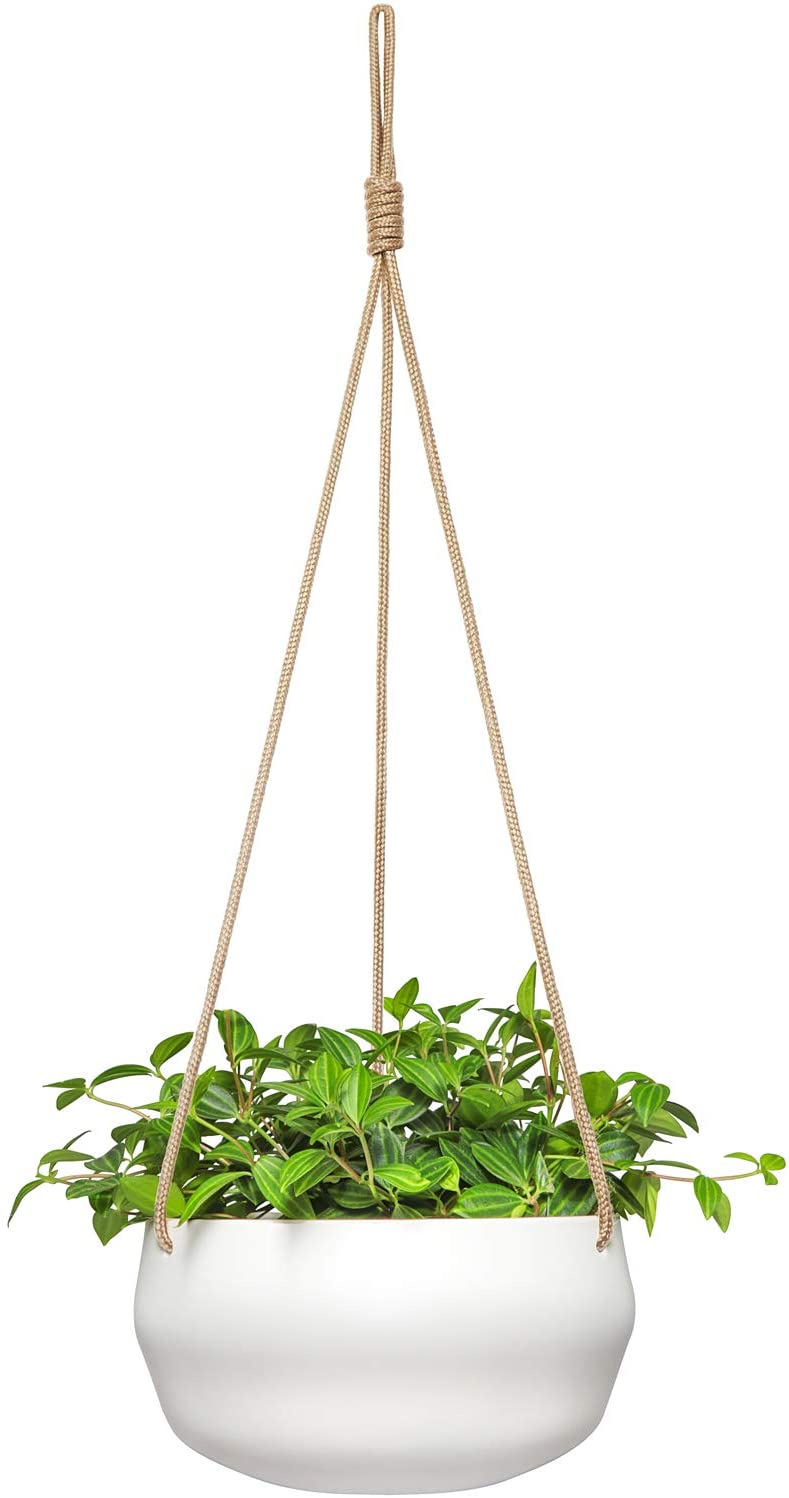
#5: Best For Large Succulents – Aveyas 6/8/10 Inch Ceramic Planter Pot
This sleek, modern pot is perfect for larger succulents! It comes with both a drainage plug and a saucer so you can really control the pot’s drain holes and protect your furniture. This pot also comes with a matching pot stand, a drainage net, and planter filler to add even more drainage to the bottom of your pot!
Your large succulents are definitely going to enjoy being in one of these!
Those are my best pots for succulents! If you still have questions, check out the frequently asked questions below, or join my plant community on Facebook, Houseplants for Plant Killers!
Then if you’re looking for your next step in your succulent journey, download my free resource, the Succulent Care Guide!
Happy Digging!
Frequently Asked Questions:
Do succulents need deep pots?
Larger succulents need deep pots, but small succulents would die in deep pots. The trick is to plant your succulent in a pot that is only an inch or two deeper than its current pot. This way, the root system will be able to reach the water all the way at the bottom of your pot.
Do succulents grow better in pots?
Most plants grow better when planted in the ground. However, if your environment isn’t hot and dry, then your succulents would actually prefer to be in a pot, where they will have better drainage and can be brought indoors when it gets cold or damp.
Can succulents stay in small pots?
Some small succulent varieties will stay perfectly happy in their small pots. However, some larger succulents will grow to where they don’t have enough room and will eventually need to be repotted into larger pots. This all depends on your type of succulent and its mature size and growth habit.
Do succulents like to be crowded?
Yes. If your succulents are in a wide pot, they do better if they are crowded. This lessens the possibility of your pot having drainage issues. It also makes the most beautiful succulent arrangements. So feel free to pack them in!
Do you put succulents in plastic pots?
Yes, you can. Just make sure that your pot still has good drainage. Don’t use plastic pots for outdoor succulents, though, as these tend to heat up, dry out, and fall over more than ceramic pots. For indoor use, however, plastic pots will be just fine.
What is the easiest succulent to grow?
There are a number of succulents that are easier to grow than others. These include haworthias, echeverias, and sedums. For a complete list, check out my post 12 Easiest Succulents to Grow Indoors.
How often should you water a succulent?
Generally, you should water your succulents once the soil has become dry, but before it begins to pull away from the sides of your pot. This is usually between every five to seven days, depending on the amount of sunlight, temperature, and season. Check out my post “How Often Should I Water my Succulent” for more details.

